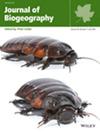The Lost Large Mammals of Arabia
Abstract
Aim
If successful, plans to restore the vegetation of the Arabian Peninsula (AP) as announced by the Middle East and Saudi Green Initiatives will see the greatest increase in vegetation cover since the beginning of the Holocene Humid Phase (HHP), roughly 9–10,000 years ago. This marked an expansion in human population that was followed by animal extinctions and extirpations that have been accelerating to the present day. The re-greening of Arabia presents a major opportunity to reverse much of this species decline; yet no complete list of the large mammal fauna of the AP during the Holocene has ever been published.
Location
Arabian Peninsula.
Time Period
Holocene.
Major Taxa Studied
Large mammals.
Materials and Methods
This paper tackles the problem by drawing on a database of archaeological and historical reports, as well as examination of thousands of published and unpublished rock images, complemented by analysis of over 30,000 toponyms.
Results
Evidence that 15 large mammal species became extinct or extirpated in the Arabian Peninsula since the beginning of the Holocene; previous published historical distribution maps of lions and aurochs shown to be incomplete; historic ranges of cheetah, Syrian wild ass, African wild ass, wild dromedary, lesser kudu, Arabian oryx, wild sheep and bezoar/wild goat distributions expanded; first published evidence of greater kudu, and Somali wild ass in the AP during the Holocene; most complete list of large mammals of the AP from the early Holocene; list of species that made it across the Sahara or recorded in the Levant during historical times that could also have colonised the AP, but for which evidence is yet to be conclusive; support for the Holocene and not the start of the modern era to be the conservation benchmark for re-wilding; and description of key features on how to identify lost species in rock art.
Main Conclusions
This study shows that the Holocene large mammal fauna of the Arabian Peninsula consisted of many African species previously thought to have become extinct much earlier or not known to have colonised this part of western Asia. Moreover, some Levantine/Asian species were also present providing a unique fauna with affinities from both Afrotropical and Palearctic realms.


 求助内容:
求助内容: 应助结果提醒方式:
应助结果提醒方式:


